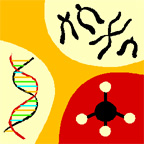 As discussed in the recent UNMC Institutional Biosafety Committee (IBC) news in the UNMC Today, all recombinant DNA research at UNMC is subject to review by the IBC. Today, we will discuss risk groups and how they determine the IBC review requirements.
As discussed in the recent UNMC Institutional Biosafety Committee (IBC) news in the UNMC Today, all recombinant DNA research at UNMC is subject to review by the IBC. Today, we will discuss risk groups and how they determine the IBC review requirements.
“What is a risk group classification?”
The risk group classification is based on the potential of an agent to cause disease in healthy adult humans.
RG-1 – Agents that are not associated with disease in healthy adult humans.
RG-2 – Agents that are associated with human disease which is rarely serious and for which preventive or therapeutic interventions are often available.
RG-3 – Agents that are associated with serious or lethal human disease for which preventive or therapeutic interventions may be available (high individual risk but low community risk).
RG-4 — Agents that are likely to cause serious or lethal human disease for which preventive or therapeutic interventions are not usually available (high individual risk and high community risk).
Risk group classification is related to the recommended biosafety containment level for the research that uses agents in a given risk group. In general, the biosafety containment level corresponds to the risk group classification number, i.e. RG-2 agents require BL-2 containment practices.
Studies requiring BL-1 containment may begin at the time that the study is submitted to the IBC for review.
Studies requiring BL-2 or BL-3 containment may begin only after approval has been granted by the IBC.